アスター
[Medicinal Use] This product is the root and rhizome of Aster in the Asteraceae family.
[Nature and flavor and meridians] Pungent, bitter, warm. Enters the lung meridian.
[Effects] Resolves phlegm and relieves cough.
[Clinical Application] Used for cough and qi reversal, uncomfortable sputum, chronic cough due to lung deficiency, and blood in sputum.
Aster is warm but not hot, moist but not dry, so it can be used for cough symptoms, whether it is external or internal injury, cold cough or hot cough, and is an important medicine for resolving phlegm and relieving cough. For cough and qi reversal, uncomfortable sputum, it can be used with white qian, platycodon, licorice, etc.; for chronic cough due to lung deficiency and blood in sputum, it is often used with coltsfoot flower, fritillaria, ophiopogon japonicus, donkey-hide gelatin, etc.
[Prescription name] Aster, Aster velvet, Aster head (wash, dry, slice), roasted Aster, honey roasted Aster (honey roasted, moisturizing the lungs)
【一般的な用法・用量】硬貨1~3枚を煎じて服用します。
[Comment] Aster is pungent, dispersing, bitter and purgative, and has a strong expectorant effect, but a weak cough suppressant effect. It is warm in nature but not dry and strong. Regardless of lung cold or lung heat, as long as there is cough with phlegm and difficulty in vomiting, regardless of new or long-term illness, it can be used.
[Example of prescription] Aster powder “Zhang’s Medical Encyclopedia”: Aster, ginseng, Ophiopogon japonicus, donkey-hide gelatin, Fritillaria cirrhosa, Poria, Platycodon grandiflorum, Schisandra chinensis, roasted licorice. Treats coughing with blood, asthenia and lung atrophy.
This product is the dried root and rhizome of Aster tataricus L.f., a plant of the Asteraceae family. It is dug up in two seasons, and the rhizomes with nodes (commonly known as “mother roots”) and mud and sand are removed, and the roots are braided and dried in the sun or directly in the sun. 术X
[プロパティ]
The rhizomes of this product are irregular blocks of different sizes, with the remains of stems and leaves at the top: the texture is slightly hard, and the rhizomes are clustered with many fine roots, 3~15cm long, 0.1~0.3cm in diameter, mostly braided: the surface is purple-red or gray-red, with longitudinal wrinkles: the texture is relatively flexible. The smell is slightly fragrant, and the taste is sweet and slightly bitter.
[識別]
(1) Cross-section of the root of this product: the epidermal cells are mostly shrunken or sometimes fall off, containing purple-red pigments. There is one row of hypodermal cells, which are slightly extended in the tangential direction, with slightly thick side walls and inner walls, and some contain purple-red pigments. The cortex is wide with intercellular spaces; there are 4~6 secretory ducts located on the inner side of the cortex; the endodermis is obvious. The pistil is small, and the xylem is slightly polygonal; the phloem is located between the arcs of the xylem; there is usually pith in the center. The epidermis of the rhizome has glandular hairs, and the cortex is scattered with stone cells and thick-walled cells. The thin-walled cells of the roots and rhizomes contain inulin, and some contain clusters of calcium oxalate crystals.
(2) Take 1g of the powder of this product, add 25ml of methanol, ultrasonically treat for 30 minutes, filter, evaporate the filtrate, and add 1ml of ethyl acetate to the residue to dissolve it as the test solution. Take another asterone reference substance, add ethyl acetate to make a solution containing 1mg per 1ml, and use it as the reference solution. According to the thin layer chromatography method (General Rule 0502), 3u1 of each of the above two solutions are taken and spotted on the same silica gel G thin layer plate, and petroleum ether (60~90℃)-ethyl acetate (9:1) is used as the developing agent. Develop, take out, dry, spray with 10% sulfuric acid ethanol solution, heat at 105℃ until the spots are clearly colored, and inspect under sunlight and ultraviolet light (365nm) respectively. In the chromatogram of the test product, spots of the same color or fluorescent spots appear at the corresponding positions of the chromatogram of the reference product.
[検査]
Water content shall not exceed 15.0% (General Rule 0832 Second Method).
Total ash content shall not exceed 15.0% (General Rule 2302)
Acid insoluble ash content shall not exceed 8.0% (General Rule 2302).
[抽出する]
Determined by the hot leaching method under the water-soluble extract determination method (General Rule 2201), it shall not be less than 45.0%.
【内容決定】
高速液体クロマトグラフィー(一般規則0512)に従って決定する。
Chromatographic conditions and system suitability test: Octadecyl sulfoxide bonded brick glue is used as filler: acetonitrile-water (96:4) is used as mobile phase: detection wavelength is 200nm; temperature is 40℃. The number of theoretical plates calculated according to Aster Lifeng should not be less than 3500.
Preparation of reference solution: Take an appropriate amount of asterone reference substance, weigh it accurately, and add acetonitrile to make a solution containing 0.1mg per 1ml.
Preparation of test solution Take about 1g of the powder (passed through No. 3 sieve), weigh accurately, place in a stoppered conical flask, accurately add 20ml of methanol, weigh, soak at 40′ for 1 hour, ultrasonically treat (power 250W, frequency 40kHz) for 15 minutes, take out, cool, weigh again, make up the lost weight with methanol, shake well, filter, take the filtrate, and get
Determination method Accurately aspirate 20ml of reference solution and test solution respectively, inject into liquid chromatograph, and determine, and get.
Calculated on the basis of dry product, this product contains no less than 0.15% of asterone (C30H5oO).
煎じ薬
[処理]
Aster Remove impurities, wash, slightly moisten, cut into thick slices or sections, and dry.
[プロパティ]
This product is in irregular thick slices or sections. The outer skin of the root is purple-red or gray-red with longitudinal wrinkles. The cut surface is light brown, with a brown-yellow wood core in the center. Slightly fragrant, sweet and slightly bitter
[識別][検査]
(Water content)
[抜粋][内容判定]
医薬品原料と同じ。
Honey Aster Take Aster slices (segments) and stir-fry until they are not sticky according to the honey roasting method (General Rule 0213).
[プロパティ]
This product is shaped like Aster slices (segments), with a brown or purple-brown surface. It has a honey aroma and tastes sweet.
[検査]
The water content is the same as the medicinal material, not more than 16.0%.
【内容決定】
Same as the medicinal material, now containing Asterone (C30H50O) must not be less than 0.10%.
[識別]
医薬品原料と同じ。
【自然と味と経絡】
Pungent, bitter, warm. Enters the lung meridian
【機能と効能】
Moisturizes the lungs and lowers qi, eliminates phlegm and relieves cough. Used for cough with phlegm, new and long-term cough, and coughing up blood due to fatigue.
【用法・用量】
5〜10g。
[ストレージ]
Put in a cool and dry place, moisture-proof. Where is the main origin of Aster?
It is mainly produced in Hebei, Inner Mongolia and the three northeastern provinces in China. It is also distributed in North Korea, Japan and other places abroad. It usually grows in humid riverside areas.
Where is the main medicinal part of Aster?
Medicinal parts of Aster:
This product is the dried root and rhizome of Aster tataricus L.f., a plant of Asteraceae. It is dug in spring and autumn, and the rhizomes with nodes (commonly known as “mother roots”) and mud are removed, and braided and dried, or directly dried.
Characteristics of the medicinal parts of Aster:
The rhizomes of this product are irregular blocks of different sizes, with the remains of stems and leaves at the top; the texture is slightly hard. The rhizomes are clustered with many fine roots, 3~15cm long, 0.1~0.3cm in diameter, mostly braided; the surface is purple-red or gray-red, with longitudinal wrinkles; the texture is relatively flexible. It has a slight fragrance and tastes sweet and slightly bitter.
How are Aster recorded in ancient books?
“Ben Jing”: “It is used to treat cough, reverse breathing, cold and heat in the chest, remove poison, paralysis, and calm the five internal organs.
“Ming Yi Bie Lu”: “It can treat cough, spitting pus and blood, and stop wheezing and palpitations.
“Ben Cao Zheng Yi”: “Aster is soft and moist. Although it is bitter and pungent, it is warm, not dry and strong. It can open and relieve lung depression, calm wheezing and reverse, and clear stagnation.
効果
Aster has the effects of moistening the lungs, lowering qi, eliminating phlegm and relieving cough.
What are the main effects and clinical applications of Aster?
Aster is used for wheezing and coughing with a lot of phlegm, new and long-term cough, and coughing up blood due to fatigue.
·This product is pungent, dispersing, bitter and descending, warm and moist without being dry. It is good at moistening the lungs and lowering qi, pungent and lung depression, resolving phlegm and turbidity and stopping cough.
It can be used to treat coughs, regardless of external or internal injuries, cold or heat, deficiency or excess. It is most suitable for those with lung qi congestion and cough with phlegm.
For example, for treating external wind-cold, cough and itchy throat, it is often used together with Platycodon grandiflorum, Nepeta tenuifolia, and Radix Paeoniae Alba;
If the cough is caused by lung heat, and the sputum is yellow and thick, it is often used together with Scutellaria baicalensis, Morus alba, Fritillaria thunbergii, etc. to clear the lungs, resolve phlegm and relieve cough;
If the yin is deficient and the sputum is bloody, it is often used together with donkey-hide gelatin, Anemarrhena asphodeloides, Fritillaria cirrhosa, etc. to nourish yin and moisten the lungs, resolve phlegm and relieve cough;
If the lung qi is weak, and there is cold cough and wheezing, it is often used together with Codonopsis pilosula, Astragalus membranaceus, and dried ginger, etc. to invigorate qi and warm the lungs, resolve phlegm and relieve cough.
What other effects does Aster have?
In my country’s traditional food culture, some Chinese medicinal materials are often widely consumed as food ingredients among the people, that is, substances that are both food and Chinese medicinal materials according to tradition (i.e. edible drug substances). According to the documents issued by the National Health Commission and the State Administration for Market Regulation, Aster is limited to the scope of use. It can be used as both medicine and food within the dosage.
Common medicinal diet recipes for Aster are as follows:
Aster tea
· 10g Aster, 3g flower tea. Use 300ml boiling water to brew and drink until the taste is light.
Aster porridge
· 10g Aster, 100g rice, and appropriate amount of white sugar.
· Select the Aster, put it in the medicine pot, soak it for 5-10 minutes, boil it in water to extract the juice, add rice to cook porridge, add white sugar when it is cooked, and boil it for one or two more times. Daily 1 dose, continuous consumption for 3-5 days.
Aster soup
· Aster (remove the seedling soil) 1 liang, Platycodon (file, stir-fry) 1 liang, Coltsfoot (remove the stem) 1 liang, Citrus aurantium (remove the pulp, stir-fry with bran) 1 liang, Old tangerine peel (remove the white, roast) 1/2 liang, Red Poria (remove the black skin) 1 liang and a half, Red Peony 1 liang and a half, Lily 1 liang and a half, 2 large belly (file)· Coarsely pound and sieve the above eight ingredients. Take 15 grams each time, add 220 ml of water, add 6 grams of Qingzhu Ru, and boil until 150 ml Lift, remove the dregs, take warm after meals, and take again after a long time.
注意:漢方薬の使用は必ず病状の鑑別と治療に基づいて行い、専門の漢方医の指導の下で使用してください。勝手に使用したり、漢方薬の処方や広告を勝手に聞いたりしないでください。
What are the compound preparations containing Aster?
如意定川錠
It can clear the lungs and calm asthma, relieve cough and resolve phlegm, and nourish qi and yin. It is used for long-term cough and asthma caused by deficiency of both qi and yin, weak body and excessive phlegm; bronchial asthma, emphysema, cor pulmonale see above Describe the symptoms.
Ermu Ansou Pills
Clear the lungs and resolve phlegm, stop cough and asthma. Used for chronic cough due to asthenia, cough with phlegm and asthma, bone steaming and hot flashes, hoarseness and heavy voice, dry mouth and tongue, and phlegm.
Juhong Granules
Clear the lungs, resolve phlegm, and relieve cough. Used for cough due to phlegm heat, excessive phlegm, yellow and sticky, chest tightness and dry mouth.
Zhike Juhong Pills
Clear the lungs, resolve cough, and resolve phlegm. Used for cough with excessive phlegm, chest fullness and shortness of breath, dry throat and itchy throat caused by phlegm heat blocking the lungs.
Jizhi Syrup
Clears heat and resolves Phlegm, clearing lungs and relieving cough. Used for cough caused by exogenous wind-heat, with symptoms of fever, aversion to cold, chest tightness, cough and sore throat; acute bronchitis and acute exacerbation of chronic bronchitis with the above symptoms
Modern research progress on Aster
化学組成
·Mainly contains terpenoid components: asterone, epiasterone, epicorkol; flavonoid components: quercetin, kaempferol, etc.; coumarin components: scopolamine, etc.; anthraquinone components: emodin, etc. It also contains sterols, peptides, volatile oils, etc. The “Chinese Pharmacopoeia” stipulates that this product contains asterone (C30H500) of not less than 0.15%, and the decoction pieces must not be less than 0.10%.
薬理効果
Aster and its various components have expectorant effects; Aster decoction, water-extracted alcohol sediment, raw Aster and honey-roasted Aster water extracts, Asterone, and epidermal.
Suppositols all have antitussive effects; Aster water-extracted alcohol sediment also has antiasthmatic effects.
Aster decoction has antibacterial, antiviral, anti-tumor, antioxidant and diuretic effects.
使用法
Aster is generally used as Aster slices and decoction. Please follow the doctor’s advice for specific medication.
How to use Aster correctly?
When Aster decoction is taken orally, the usual dosage is 5~10g.
Through different processing methods, Chinese medicinal materials such as Aster, honey Aster and stir-fried Aster can be produced. It is suitable to be used raw for exogenous cough, and honey roasted for chronic cough due to lung deficiency. Different processing methods have different effects, but the medication method is the same. Please follow the doctor’s advice for specific medication.
Aster is usually used in decoctions, decoctions, or powders or pills. However, the use of Chinese herbal medicines must be based on syndrome differentiation and treatment, and should be used under the guidance of professional Chinese medicine practitioners. It should not be used at will, and it is even more forbidden to listen to Chinese medicine prescriptions and advertisements at will.
How to prepare Aster?
Aster: Take the original herbal medicine, remove the residual stems and impurities, wash, moisten slightly, cut into thick slices or segments, and dry.
Honey Aster: Take refined honey and dilute it with an appropriate amount of boiling water, add clean Aster slices or segments, mix well, simmer thoroughly, put it in a frying pot, heat it over a slow fire, fry until it is brown and not sticky, take it out and cool it. For every 100kg of Lithospermum, use 25kg of refined honey. Stir-fried Aster: Take clean Aster and put it in a hot pot, fry it over a slow fire until the surface is old yellow or slightly burnt. Take it out and cool it down.
What drugs should be used with Aster at the same time?
The combined use of Chinese medicine and Chinese and Western medicine requires syndrome differentiation and individualized clinical treatment. If you are using other drugs, please consult a doctor before taking the medicine, and inform the doctor of all your diagnosed diseases and the treatment plan you are receiving
使用方法
This product is pungent, dispersing, bitter, warming and moistening, so it is not suitable to be used alone for warm and dry cough or real heat phlegm cough.
What are the precautions when using Aster?
Those with real heat should take it with caution.
During the medication period, you should pay attention to avoid eating cold, raw, spicy, and greasy foods, avoid smoking and drinking,
妊娠中および授乳中の女性:妊娠中、妊娠を計画中、または授乳中の場合は、早めに医師に連絡し、漢方薬による治療が可能かどうかご相談ください。
·子供:子供の投薬は医師の指導と大人の監督の下で行う必要があります。
・医薬品は適切に保管し、自分の医薬品を他人に渡さないでください。
·薬を煎じる際に銅や鉄の器具の使用は避けてください。
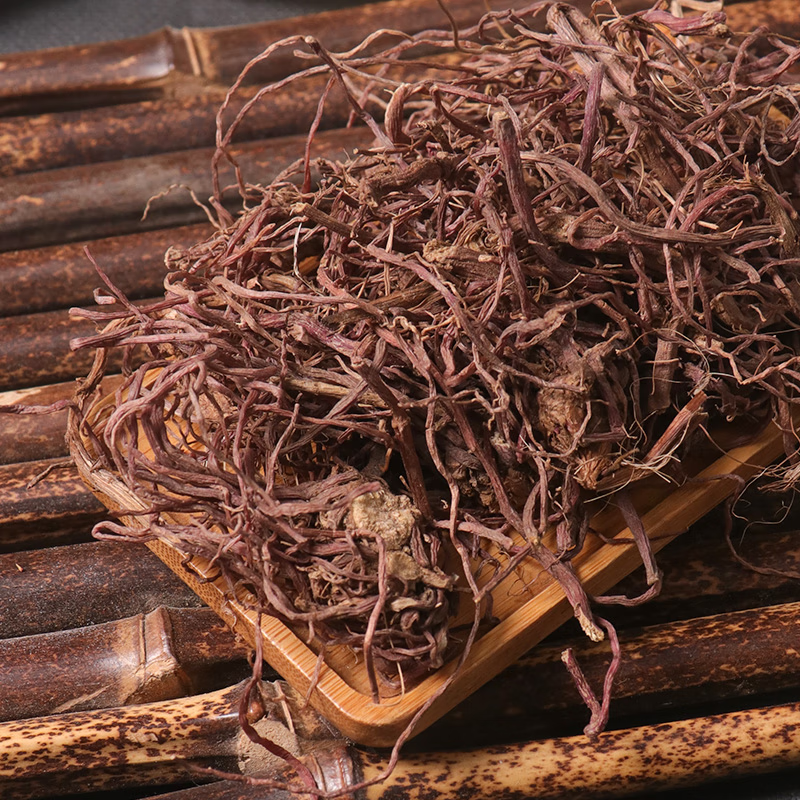


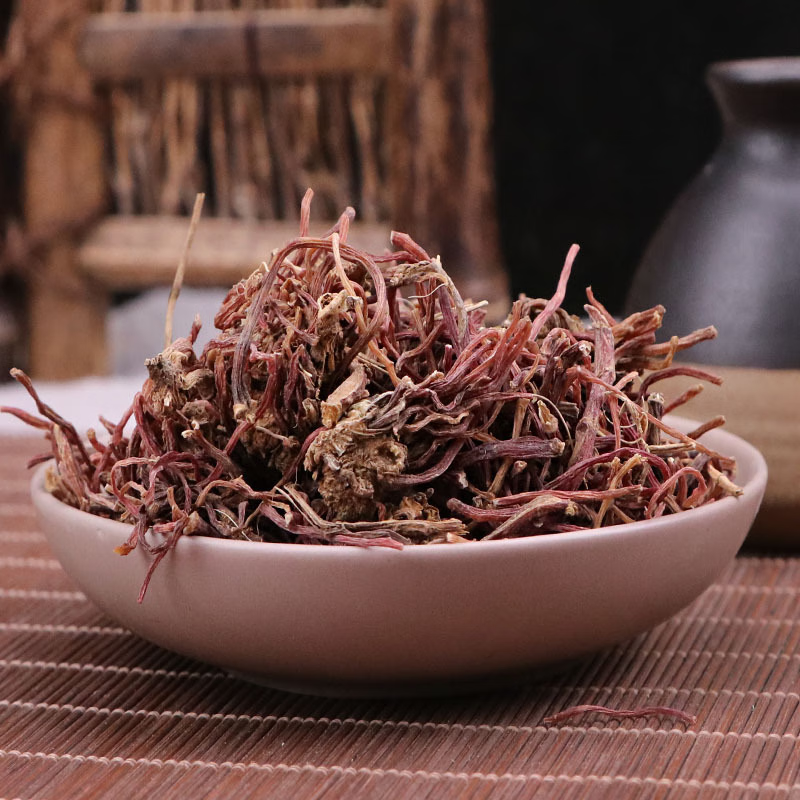





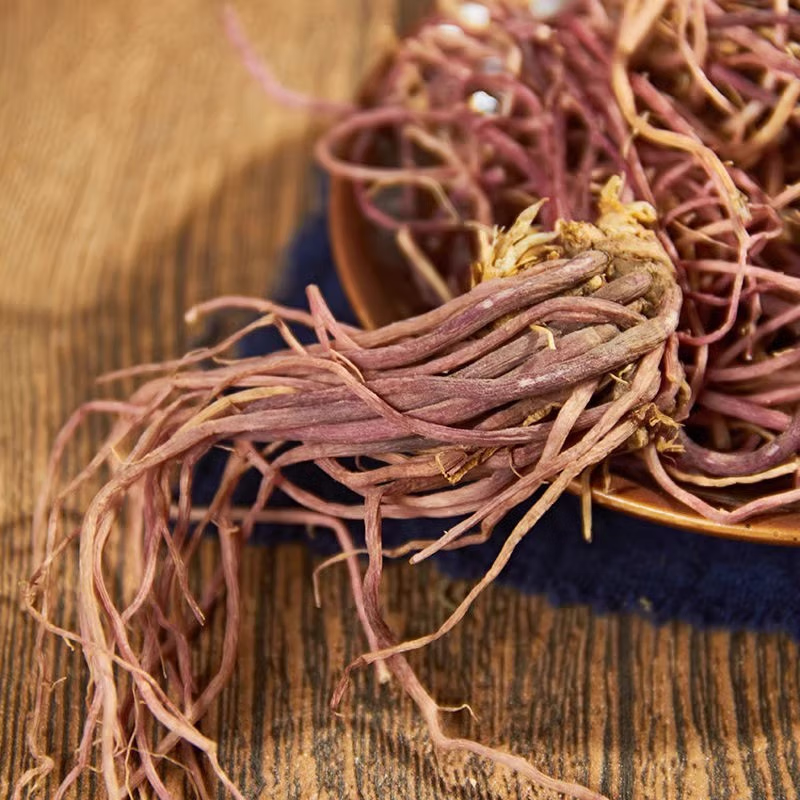



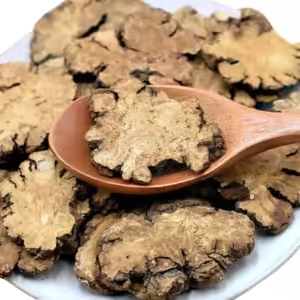
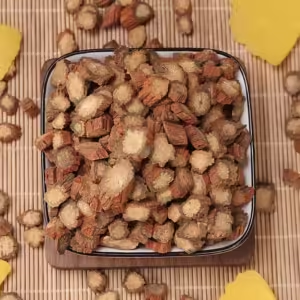
レビュー
レビューはまだありません。